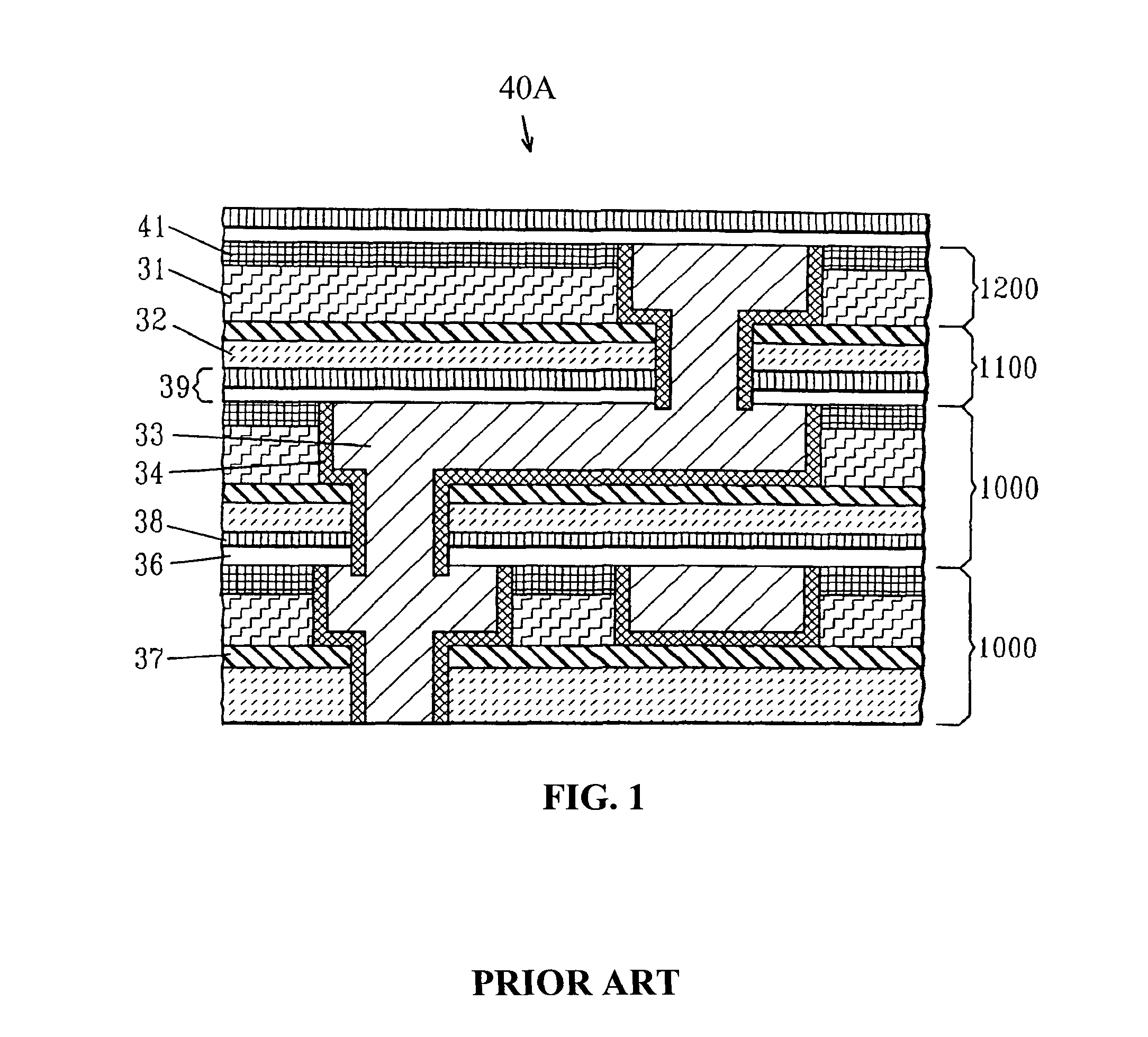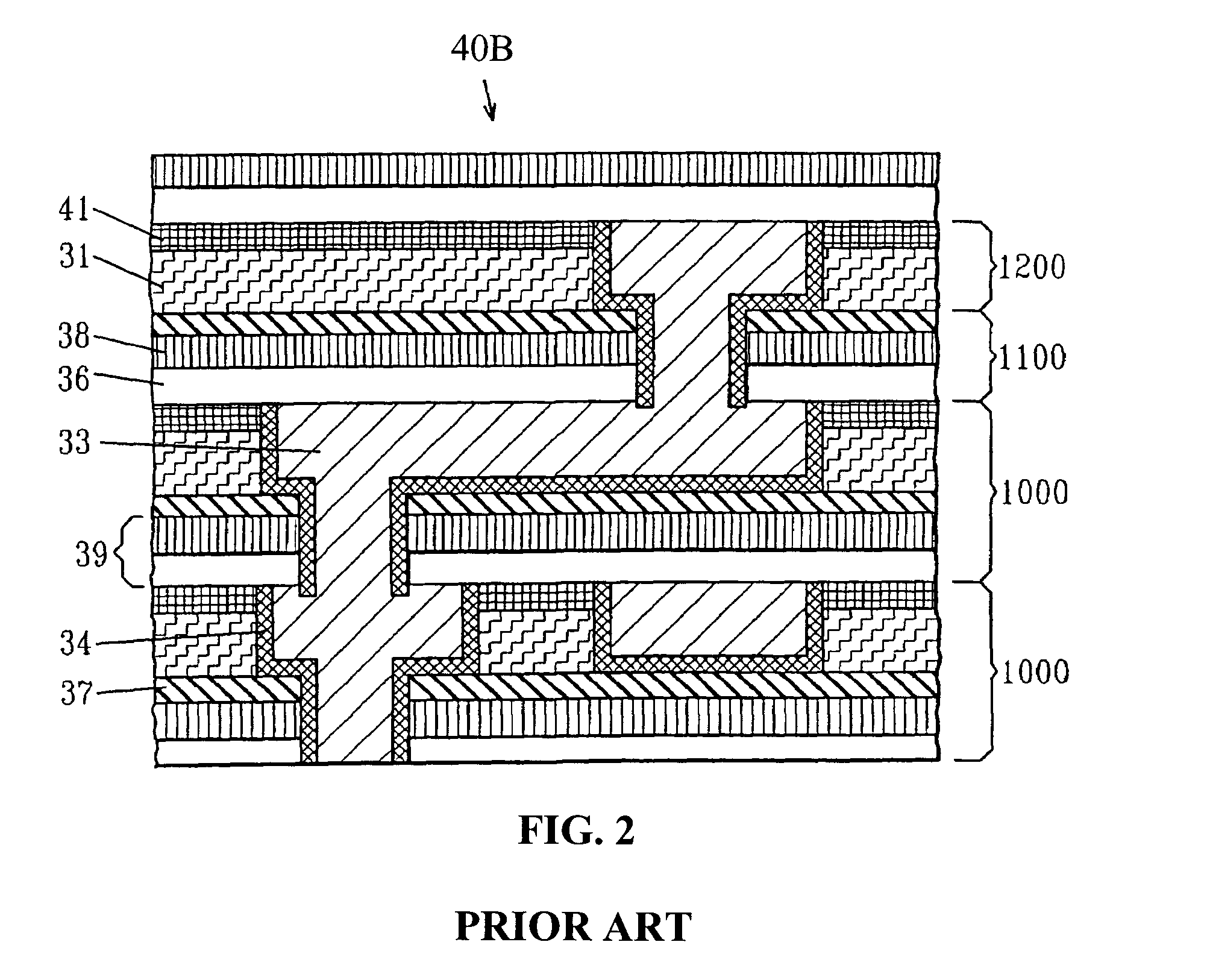Embedded nano UV blocking and diffusion barrier for improved reliability of copper/ultra low K interlevel dielectric electronic devices
a technology of low-k-interferometer and nano-uv blockage, which is applied in the direction of semiconductor devices, semiconductor/solid-state device details, electrical apparatus, etc., can solve the problems of copper diffused easily into the surrounding dielectric material, the uv/e-beam modification is prevented, and the device scale is decreased. , to achieve the effect of reducing the dielectric constant, minimizing the stress change, and preventing the modification of uv/e-beam
- Summary
- Abstract
- Description
- Claims
- Application Information
AI Technical Summary
Benefits of technology
Problems solved by technology
Method used
Image
Examples
Embodiment Construction
[0059]In one embodiment of the present invention, a multilayered diffusion barrier layer is thermally stable above 300° C., has a thickness between 10 nm and 50 nm, and is comprised of at least two laminated films, i.e. a dual film (bilayer), where at least one film is an air and metal diffusion barrier and at least another of the dual films is a UV blocking film. The multi-film diffusion barrier layer of the present invention may have a variety of configurations including, for example, dual films with the UV blocking film atop the laminated cap barrier, dual films with the cap barrier film atop the UV blocking film, or a triple film (three laminated films or which may be referred to as a trilayer) with the UV blocking film placed between two cap barrier films. For example, (a) if the objective is to prevent UV penetration, the UV blocking film is deposited on top; (b) if the objective is to allow partial UV penetration, the film is inserted in middle of a triple film; and (c) if th...
PUM
| Property | Measurement | Unit |
|---|---|---|
| diameter | aaaaa | aaaaa |
| dielectric constant | aaaaa | aaaaa |
| dielectric constant | aaaaa | aaaaa |
Abstract
Description
Claims
Application Information
 Login to View More
Login to View More - R&D
- Intellectual Property
- Life Sciences
- Materials
- Tech Scout
- Unparalleled Data Quality
- Higher Quality Content
- 60% Fewer Hallucinations
Browse by: Latest US Patents, China's latest patents, Technical Efficacy Thesaurus, Application Domain, Technology Topic, Popular Technical Reports.
© 2025 PatSnap. All rights reserved.Legal|Privacy policy|Modern Slavery Act Transparency Statement|Sitemap|About US| Contact US: help@patsnap.com



